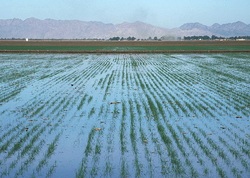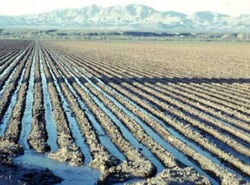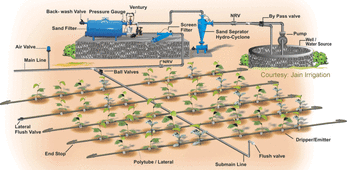Water Sustainability
Different Irrigation Techniques
Flood Irrigation
Furrow Irrigation
Drip Irrigation
- Irrigation techniques are split into two sets. One set is surface irrigation, also known as Flood irrigation, comprising of Furrow and Sprinkler. This system allows the water to infiltrate into the land by spreading it over the ground and letting gravity work.
The second set is localized irrigation, or micro irrigation. works through a set pattern of pipes, only giving out water where it will be most effective.
Flood - Least efficient
• Furrow
• Sprinkler
– Center-pivot
– Wheel line
• Micro-irrigation - Most efficient
– Trickle, drip, spray
– Above ground, below ground - Micro-Irrigation: Micro-Irrigation refers to low-pressure irrigations systems that trickle, drip and spray water. The method through which the system disperses water is programmable, so it can be set depending on specific environment and plant requirements. The water flows out of small devices which can either be placed close to the soil surface near a plant or below the soil surface directly in the plant root zone. Other benefits of this system include:
- Water transfer loss is minimal
- Can be used on hilly land because there is no run off
- Can use saline water
- Evaporation, run off, and deep percolation are reduced
- With limited wet area, weed growth is reduced
- Smaller power unit required compared to sprinkler irrigation systems



